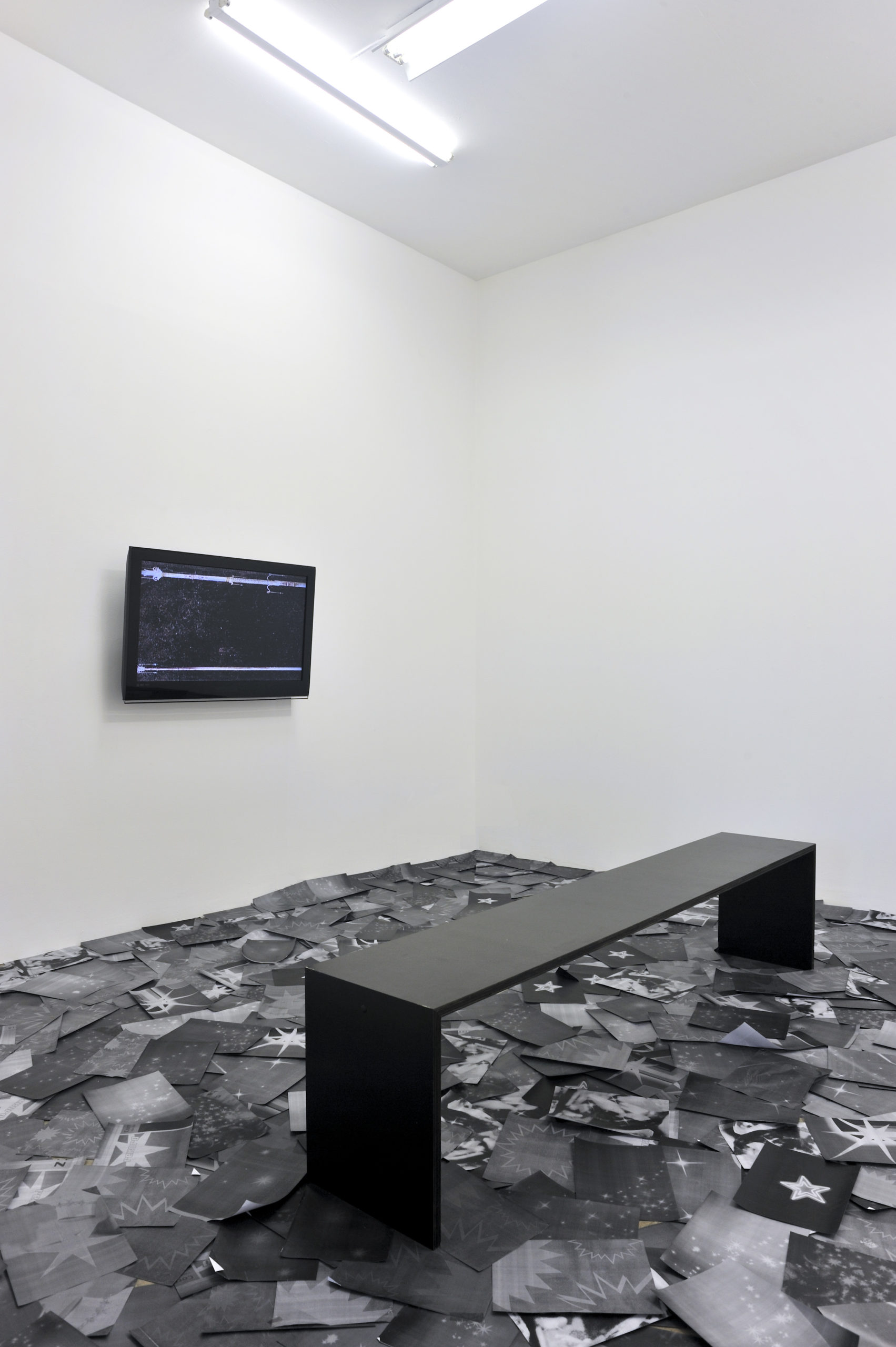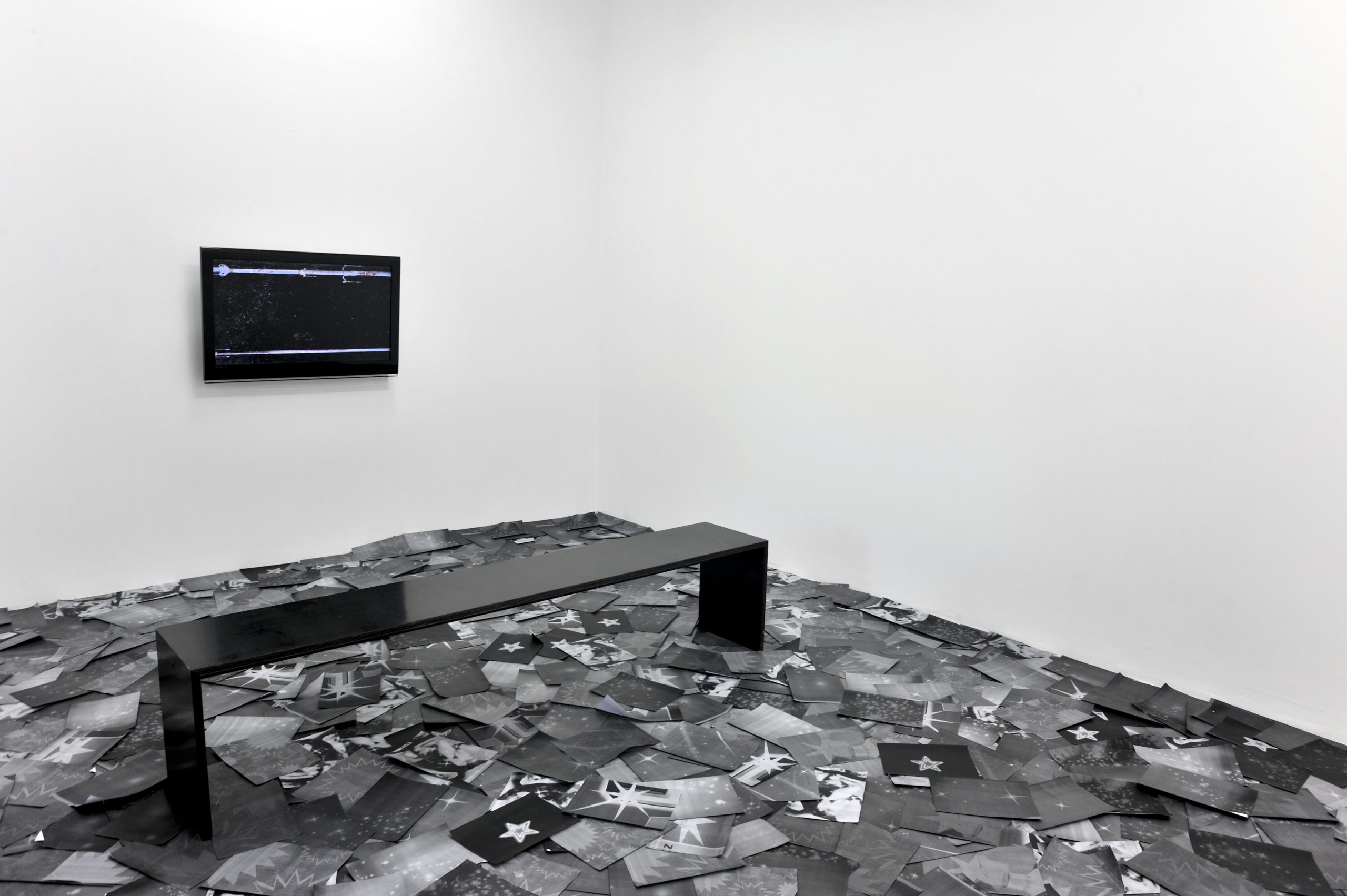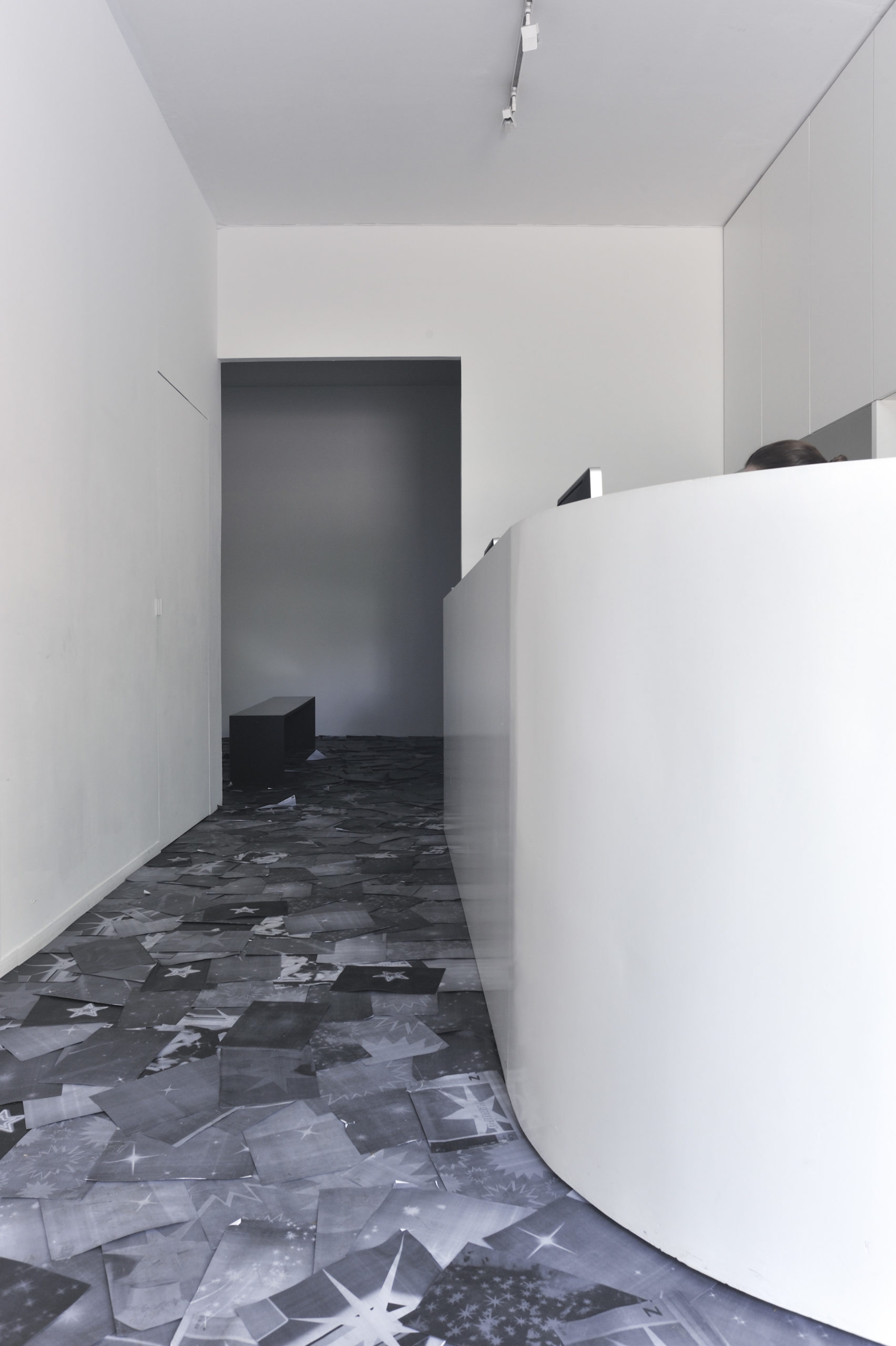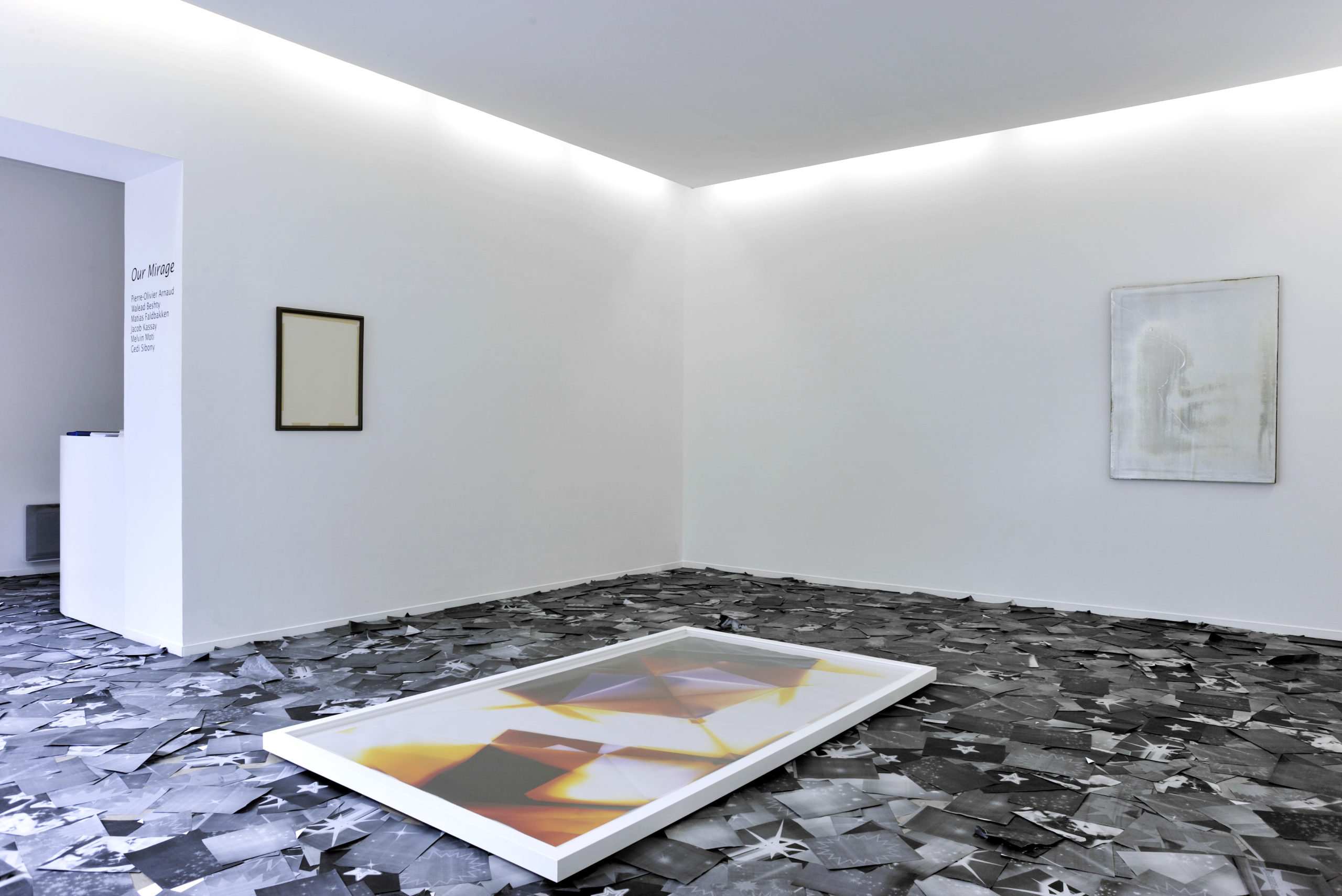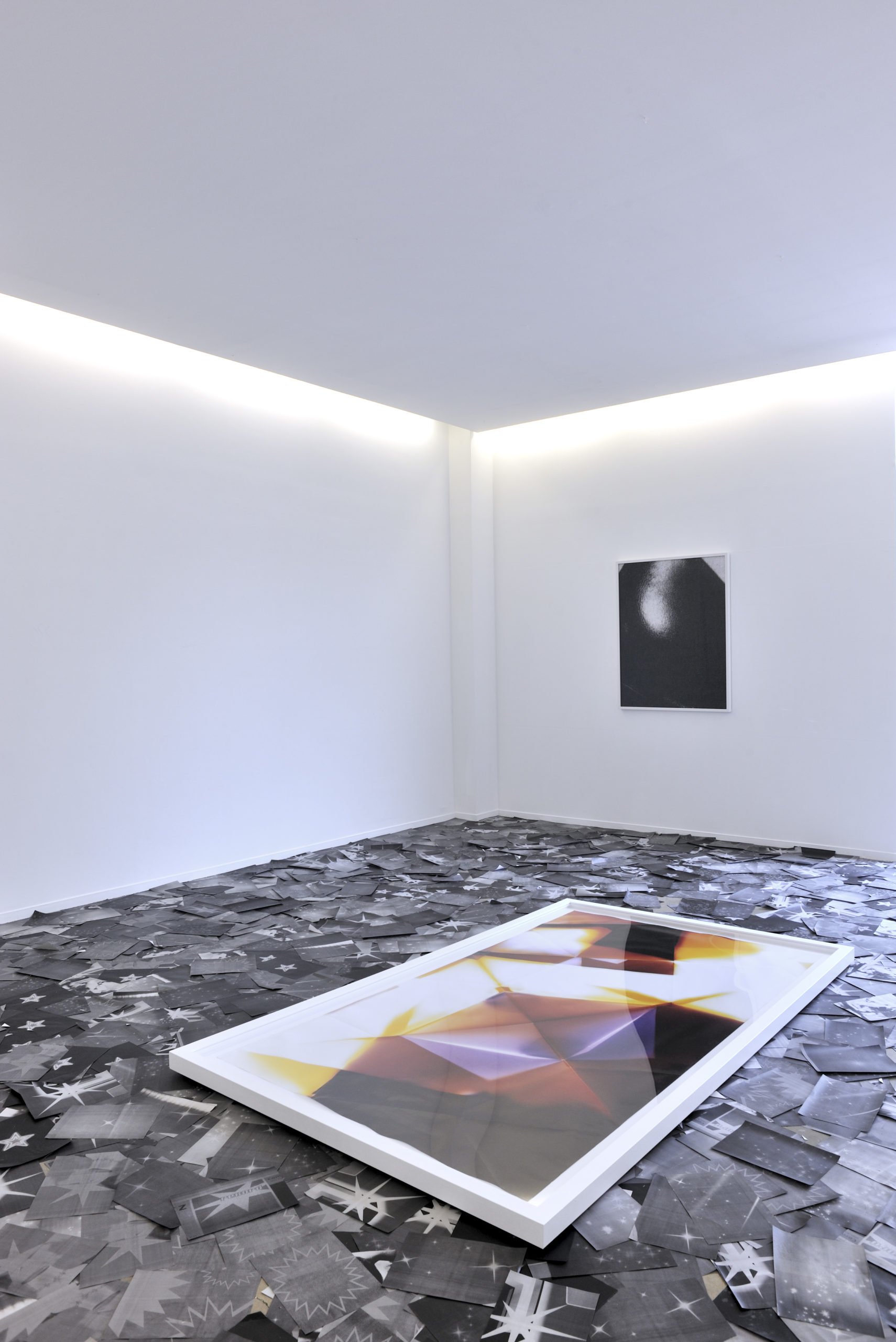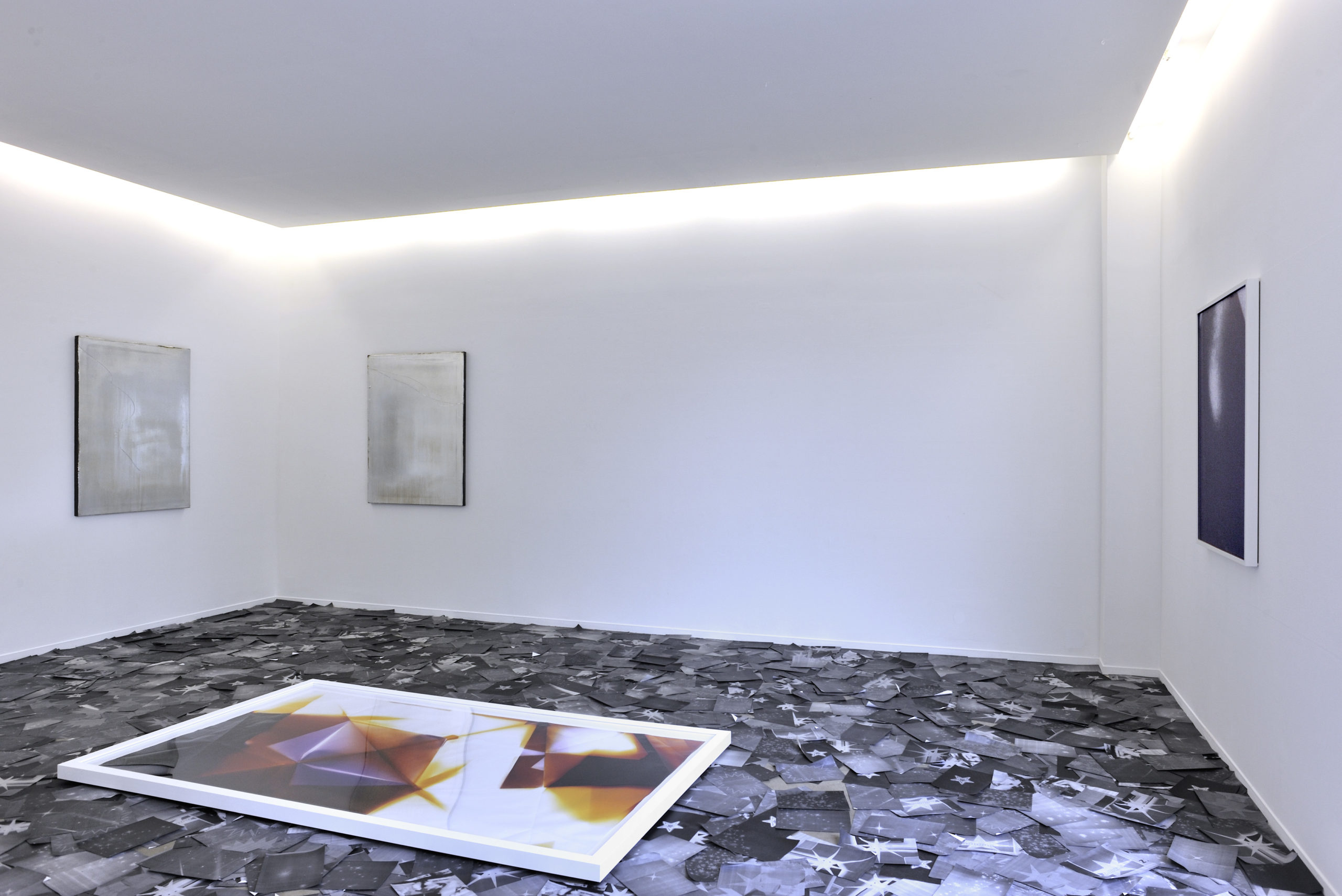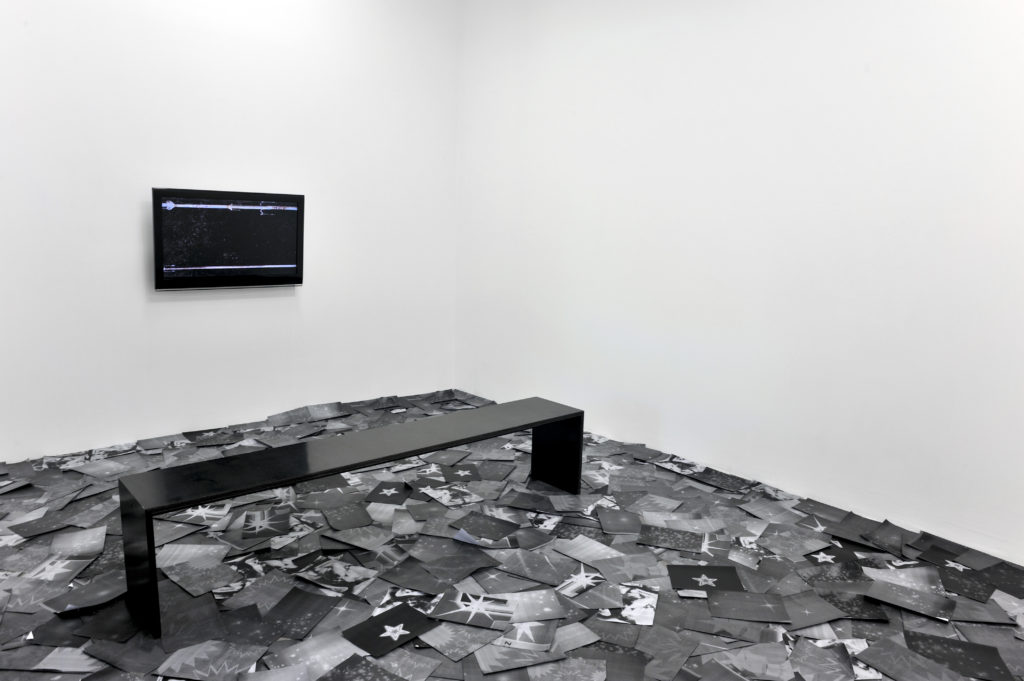
Vue d’exposition / Installation view Our Mirage, Art : Concept, Paris, 2009. Photo Fabrice Gousset 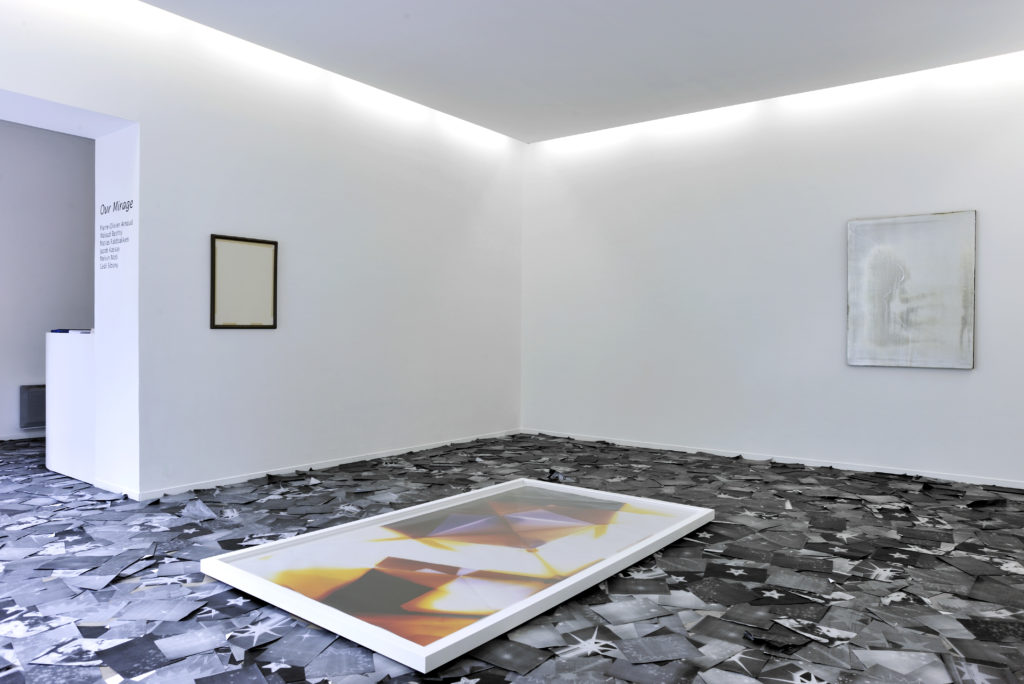
Vue d’exposition / Installation view Our Mirage, Art : Concept, Paris, 2009. Photo Fabrice Gousset 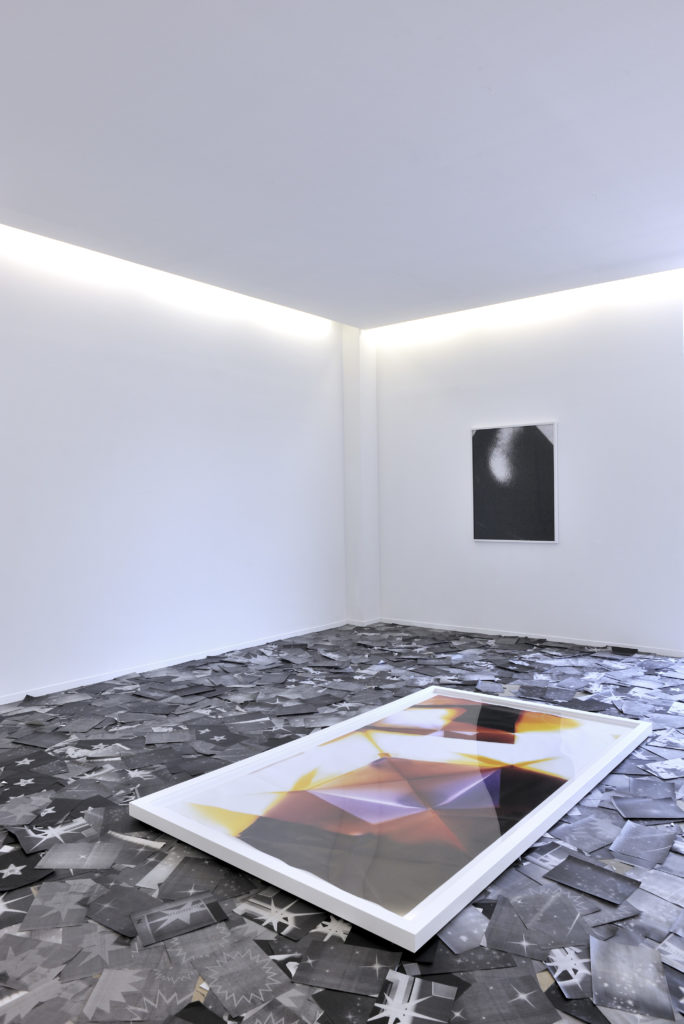
Vue d’exposition / Installation view Our Mirage, Art : Concept, Paris, 2009. Photo Fabrice Gousset 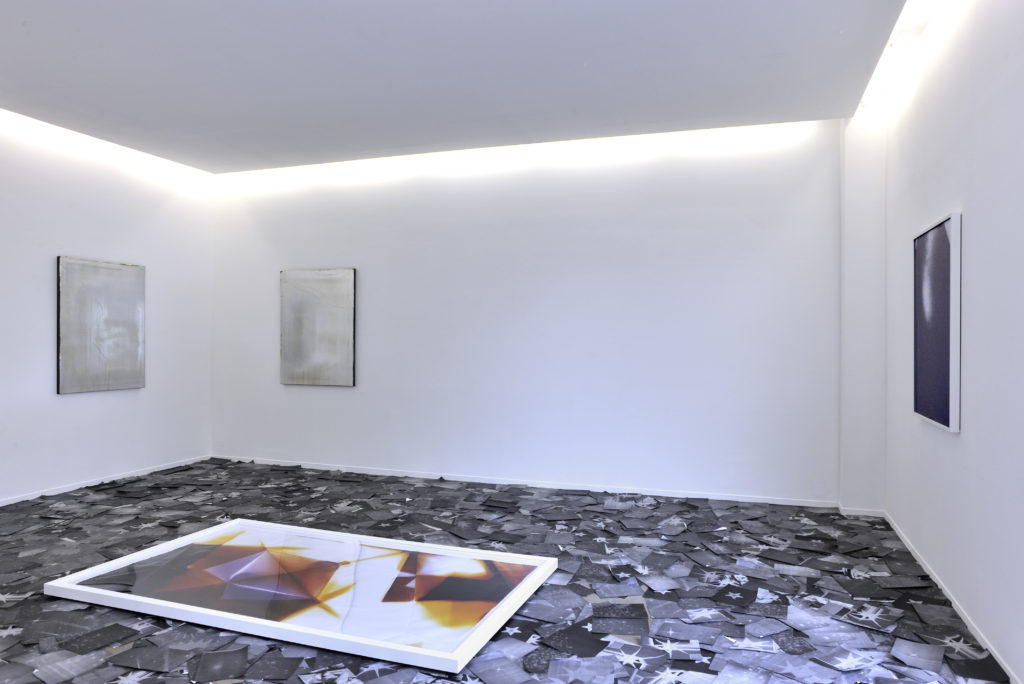
Vue d’exposition / Installation view Our Mirage, Art : Concept, Paris, 2009. Photo Fabrice Gousset
Art : Concept is pleased to announce « Our Mirage », a collective exhibition featuring works by Pierre-Olivier Arnaud, Walead Beshty, Matias Faldbakken, Jacob Kassay, Melvin Moti and Gedi Sibony.
The gathering of these works plays with a standardization effect, mainly due to a shared interest in radical approaches of the image, and to artistic practices combining industrial as well as handcrafted reproduction means.
Framing the back of an image, Gedi Sibony renders only a white cardboard and few pieces of tapes visible. Matias Faldbakken’s Newspaper Ad # 09 consists of the negative reproduction of an advert. He creates a sort of black monochrome, so that, in a literal and metaphorical sense, the final result underlies the margins more than the usual space usually containing information. Jacob Kassay’s silver paintings formally echo ancient photographic techniques and offer a sacred and frozen version of the monochrome. Nowadays considered as a rhetorical figure or as a generic object in modern and contemporary art, the monochrome here paradoxically calls the subjectivity of its creation process into question. The making is based on a complicated and random chemical process.
Pierre-Olivier Arnaud’s stack of offset posters, spread all over the exhibition space, consists of a washed out galaxy, as if the surface of the image was veiled, and as if the density of greys and shadows made the glaring stars unable to emerge the surface. Walead Beshty’s large-format abstract composition comes as counterpoint to the posters. Using the light as the essence of photography, the artist folds and directly exposes the silver film under the natural light. In the current show, this coloured photogram has been displayed horizontally, lying on the floor, such as a modernist sculpture or even as a recumbent statue.
In the second room, Melvin Moti’s film The Black Room reveals the power of imagination, strangeness, and fiction of moving-images. A tracking shot slowly reveals ornaments from a wall painting filmed in a house near Pompei, while a voice over reenacts Robert Desnos’s interview about hypnosis sessions he partook with the surrealist group. Thus, Moti creates a displacement between those unframed floating images edited with Desnos’s word. Such as the other works which are still images, made with raw materials or following accidental or random (and almost world-weary) artistic gestures, The Black Room remains as a puzzle, largely depending upon storytelling as inherent part of its interpretation.
The use of minimal abstract forms as well as endless experimentations on the monochrome suggest a possible dematerialization or postponed disappearance of the image. This raises the ambiguous status of each of the pieces, undefined or in-between image and object. Indeed, canvasses, frames and sometimes vaguely figurative contents remain, counterbalancing a certain absence or void.
If most of the works are original records of our world or fragments taken from the real, various creation processes (reframing, trimming, mechanical or digital reproduction, assemblage, etc.) are able to transform the pictorial surface into an abstract, encoded or even invisible picture.
